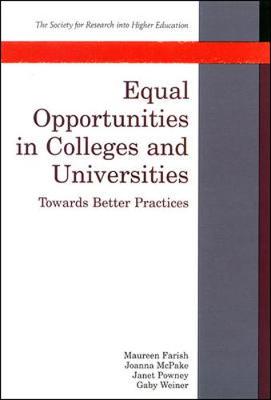Society for Research into Higher Education
1 total work
Equal Opportunities in Colleges and Universities
by Maureen Farish, Joanna McPake, Janet Powney, and Gaby Weiner
Published 1 September 1995
This book is the first attempt to consider the effectiveness of equal opportunities policies for staff (in colleges and universities) after the policies have been passed and implemented. It suggests future strategies for policy-makers and equal opportunities 'activists' in the light of the findings which concern structure, policy coherence and policy contradiction.
It provides an account, through the detailed case-studies of three educational institutions (one further education college, one 'new' and one 'old' university) of how equal opportunities policy-making has developed over the last decade and what gains have been made. It also examines the complexity of trying to judge the effectiveness of such policies by viewing policy from a number of standpoints including those of managers and policy-makers, those charged with implementing the policies (for instance, equal opportunities or women's officers), and those at the receiving end. In trying to unravel the complexity, what emerges is the importance of institutional history and context as well as policy structure and content.
It provides an account, through the detailed case-studies of three educational institutions (one further education college, one 'new' and one 'old' university) of how equal opportunities policy-making has developed over the last decade and what gains have been made. It also examines the complexity of trying to judge the effectiveness of such policies by viewing policy from a number of standpoints including those of managers and policy-makers, those charged with implementing the policies (for instance, equal opportunities or women's officers), and those at the receiving end. In trying to unravel the complexity, what emerges is the importance of institutional history and context as well as policy structure and content.
